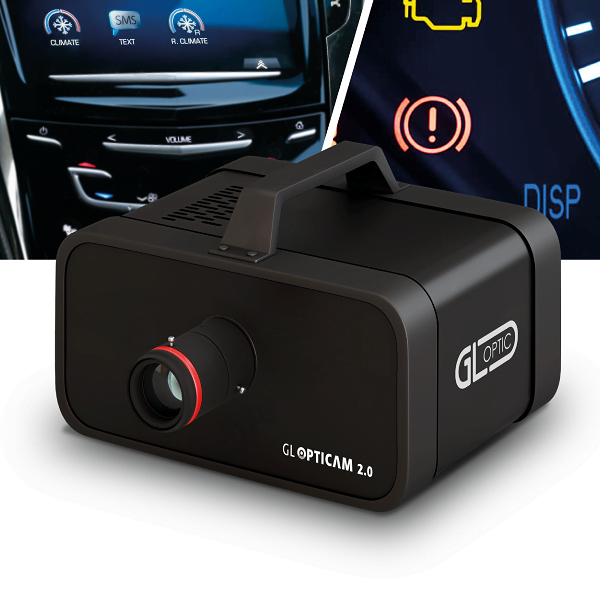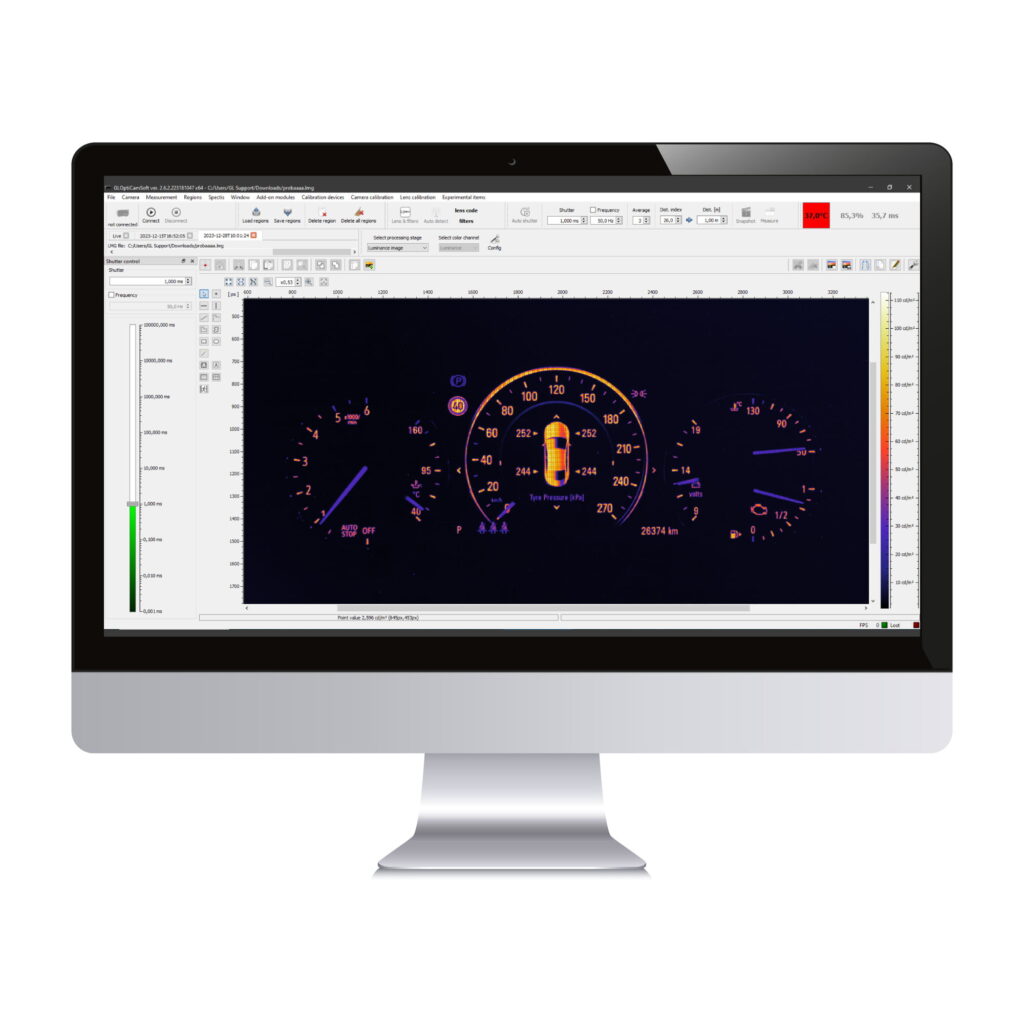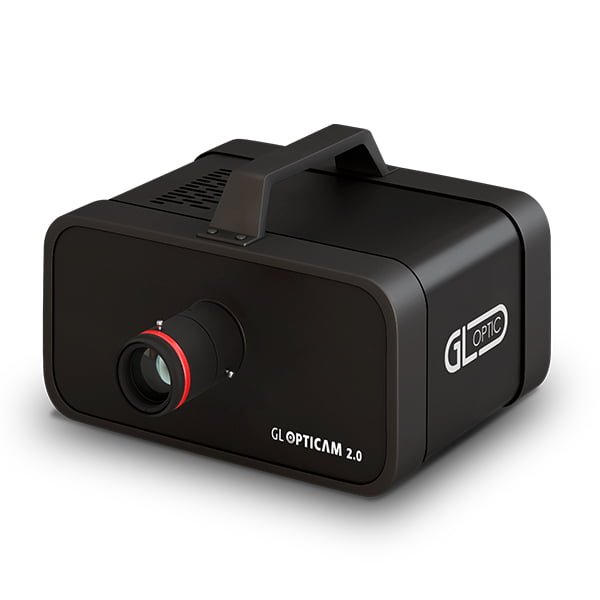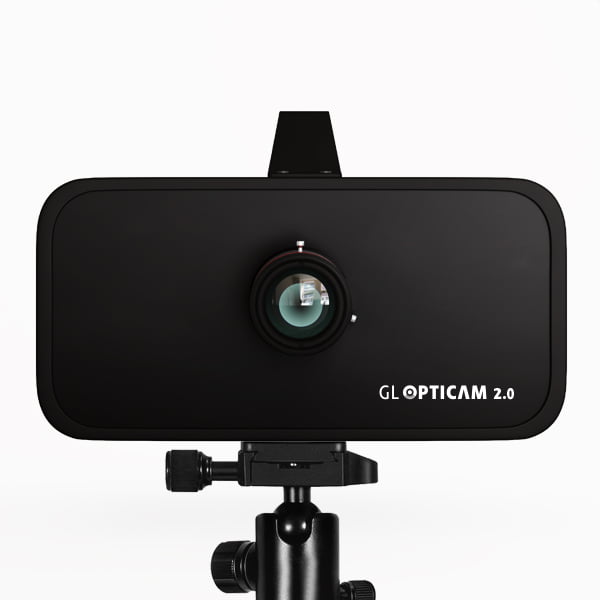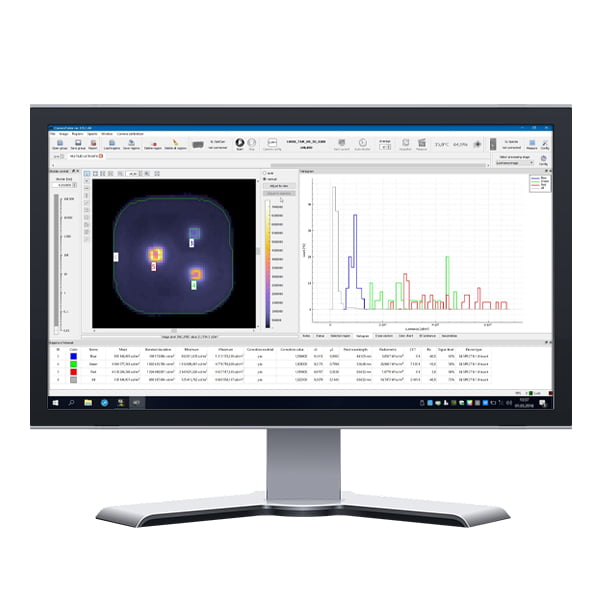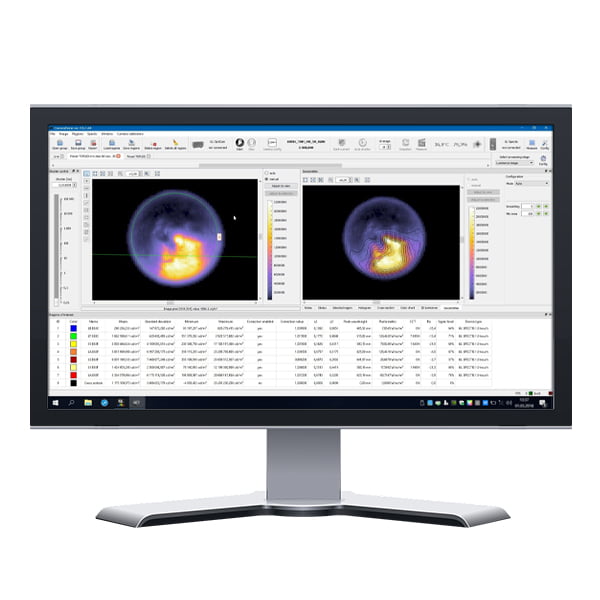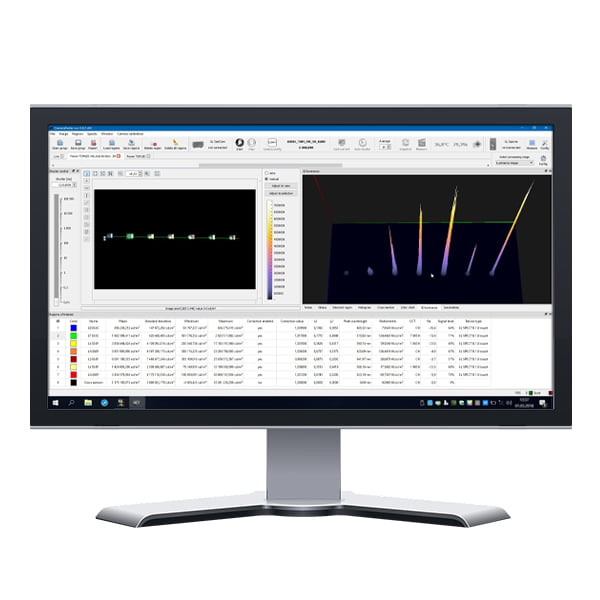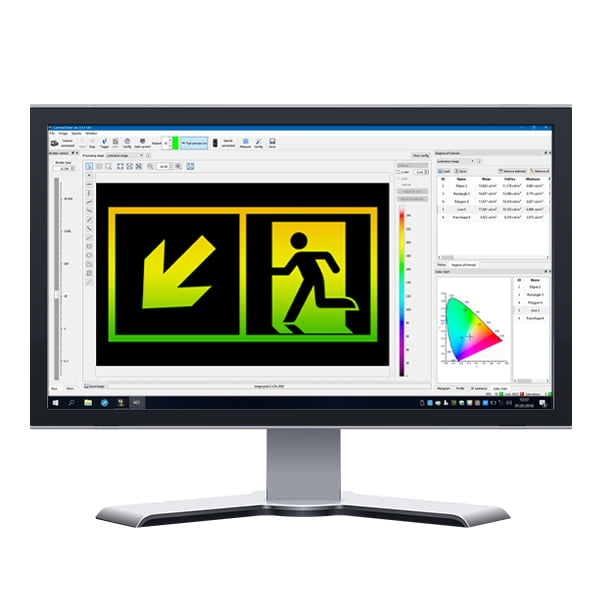Any questions or would you like to order this product? Do not hesitate to contact us
Product categories
Filter the products and categories by showing only certain partners.
Laboratory imaging luminance cameras for a variety of applications
Faster changes in the design and complexity of backlit components in the automotive, transportation, electronics, and other industries are posing challenges for optical engineers and system developers. The employment of contemporary LED and OLED components to improve user interfaces presents development teams and QA/QC staff with a problem when it comes to quality verification. For optical examinations and measurements, they are all in need of dependable and easily available devices.
The GL OPTICAM 2.0 4K TEC is an imaging luminance measuring tool that was created to help the quicker adoption of contemporary LED and OLED lighting systems by confirming compliance and evaluating the functionality of lighting components. A stable luminance testing solution is necessary for the optical performance of instrument clusters, backlit buttons, and displays. It is necessary for developers, designers, and quality engineers to confirm light leakage, brightness distribution, contrasts, and homogeneity. Throughout the R&D and manufacturing phases, all touch-screen control panels, backlit buttons, displays, keyboards, and indicator lights may be quickly and accurately tested with this innovative optical device.
The high-resolution, laboratory-performance optical camera system GL OPTICAM 2.0 4K TEC has a dedicated V-Lambda correction filter that perfectly adjusts the system’s sensitivity (response) to a human’s eye sensitivity. It also features a high-resolution 9M pixel CMOS image sensor. Depending on the exact needs for brightness measurement, this optical system comes with a variety of top-notch lenses. The technology includes a patent-pending RFID lens recognition system and an image sensor with thermal stabilization to compensate for measurement mistakes caused by temperature changes.
This spectroradiometer can be used in conjunction with 00GL SPECTIS 1.0 Touch to test color.
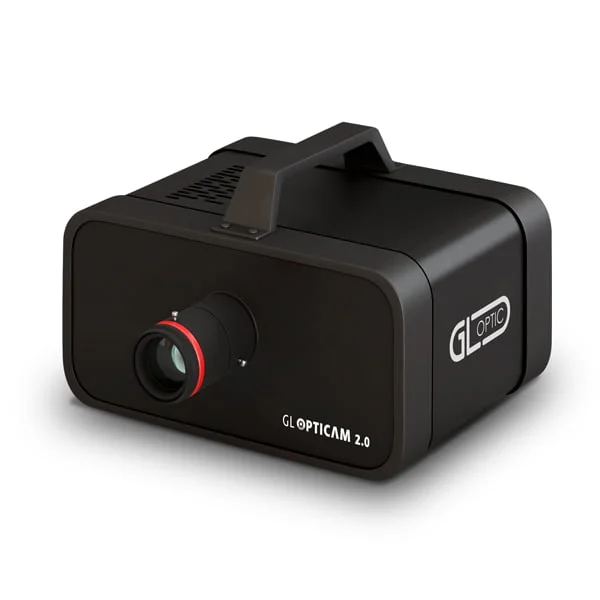

RFID automatic lens recognition
With a large laboratory-grade back-thinned CCD sensor from Hamamatsu, the GL SPECTIS 4.0 optical light meter offers exceptional stability over extended exposure times. The gadget is calibrated using globally recognized factory calibration and reference standards traceable to National Laboratories. Automatic monitoring of electronic dark current levels is combined with intelligent drift adjustment for temperature variations.
Improved optical resolution
Select the appropriate parts to improve the performance of your product. In the R&D department, utilizing a brightness measuring camera system directly will enhance quality control while saving costs and time. This accurate brightness measuring device with a 9-pixel resolution can enhance your research and development when creating a new, intricate optical system. You can now decide on modification and/or compliance more quickly.
Thermally stabilized sensor
Our novel, fast, and accurate imaging technology for brightness measurements and tests is perfect for manufacturing quality control and backlit module development. This image luminance meter provides accurate and useful data for pass-fail production monitoring systems. It can be utilized in the lab or integrated into production online and offline testers for LED modules, displays, and instrument cluster testing.
GL OPTICAM 2.0 4K TEC Usage
Drive your critical requirements with specialized instrument
The new GL OPTICAM Imaging Luminance Measuring Device (ILMD) was developed primarily for the automobile and home appliance electronics industries. Precise testing of lighting components is even more important because of the growing number of touch panels and intricate instrument clusters. For example, assessing the brightness uniformity of finely illuminated icons requires high-resolution imaging equipment. Additionally, the brightness measurement camera needs to have a resolution that is suitable for working with high-resolution displays. For this reason, we made the decision to provide a new luminance camera system model with a 9 million pixel image sensor resolution. The new Sony CMOS monochromatic image sensor, together with a class A V-lambda correction filter and a precisely chosen lens, forms the foundation of the GL OPTICAM 2.0 4K TEC. Every optical system offered by GL Optic comes with factory calibration, which is a multi-step process that guarantees laboratory accuracy and traceability.
Best-in-class optical system
An optical correction filter that is specifically chosen and calibrated for the image sensor is included with every camera system. In contrast to digital cameras that are mass-produced, GL Optic instruments are made using premium glass filters and lenses from reputable vendors.
The TEC unit enhances stability and expands the dynamic range of the image sensor by thermally stabilizing it.
The system configuration can be automatically changed with the aid of a revolutionary RFID system for automatic lens recognition. With the aid of our GL OPTICAM SOFT analysis software, this light camera brightness meter enables quick setup and measurement of various objects. You may monitor the image, adjust the parameters, and measure the brightness by capturing an image of the device’s user test of the luminance scene by simply plugging this calibrated imaging luminance meter into your PC.
The analytical software will immediately display other important data, present brightness levels and histograms, and determine default regions of interest. The technology assists in analyzing particulars and areas and might even offer the required adjustments. Similar to a standard scientific equipment, this one offers absolute luminance accuracy.
When colour matters
The standard GL OPTICAM 2.0 4K TEC luminance meter can be used in conjunction with our GL SPECTIS 1.0 Touch spectral device to allow luminance and color testing and assessment when the lighting fixture or electrical board uses multiple color LEDs. Combining the spectroradiometric measurement with the luminance camera measurements is possible with our GL SPECTROSOFT. Thus, we are able to offer complete colorimetric and spectral data for the LED product that is being tested, as well as the mismatch correction for brightness values to obtain the maximum accuracy.
GL OPTICAM 2.0 4K TEC Features
Plug and measure with RFID automatic lens recognition*
Digital luminance camera system that is uniquely calibrated and preconfigured for quick testing of light components and quality control of light devices. This instrument is easy to use; just place it in front of the lighting system to measure the absolute brightness level right away. The calibration file is uploaded by the system when it detects the lens automatically. For product testing and field measurements related to lighting system quality control, use this tool in the lab.
Improved optical resolution
This accurate brightness measuring device with 9 pixel resolution can enhance your research and development when creating a new, intricate optical system. You can now decide on modification and/or compliance more quickly.
Thermal stabilisation
To counteract measurement inaccuracies caused by temperature variations, this instrument has a TEC unit for thermal stabilization of the image sensor.
Dedicated V- lambda filter
A carefully chosen class A optically adjusted filter is fitted to every camera to ensure the best possible brightness measurements that match the sensitivity of the human eye. Every filter has a unique optimization for every CMOS sensor.
Adding spectrum and colour
The quality control can be expanded with colorimetric values such as CCT, CRI, and many more by combining this new picture luminance camera with our spectrum instruments, such as GL SPECTIS 1.0 Touch. It will also enable the measurements of multiple-color LED devices and offer an automatic filter miss-match adjustment process.
GL OPTICAM 2.0 4K TEC Metrics
Photometric quantities
- Point Luminance [cd/m2]
- Luminance distribution
- Iso candela diagram
- Average luminance
- Min Max diagram and tables
Spectral color quantities
- Correlated Colour Temperature – CCT and Duv
- Colour Rendering Indices – Ra, CRI, R1 to R14
- New rendering Rf and TM-30
- Colour Uniformity
- Binning and colour consistency
- Spectral Power Distribution
PDF and available downloads
You can download the information on this page and the available downloads as one PDF file. There are 2 downloads available for this product.
Enter your email address once to gain access to all downloads on the PEO website.
There are 2 downloads available for this product.
